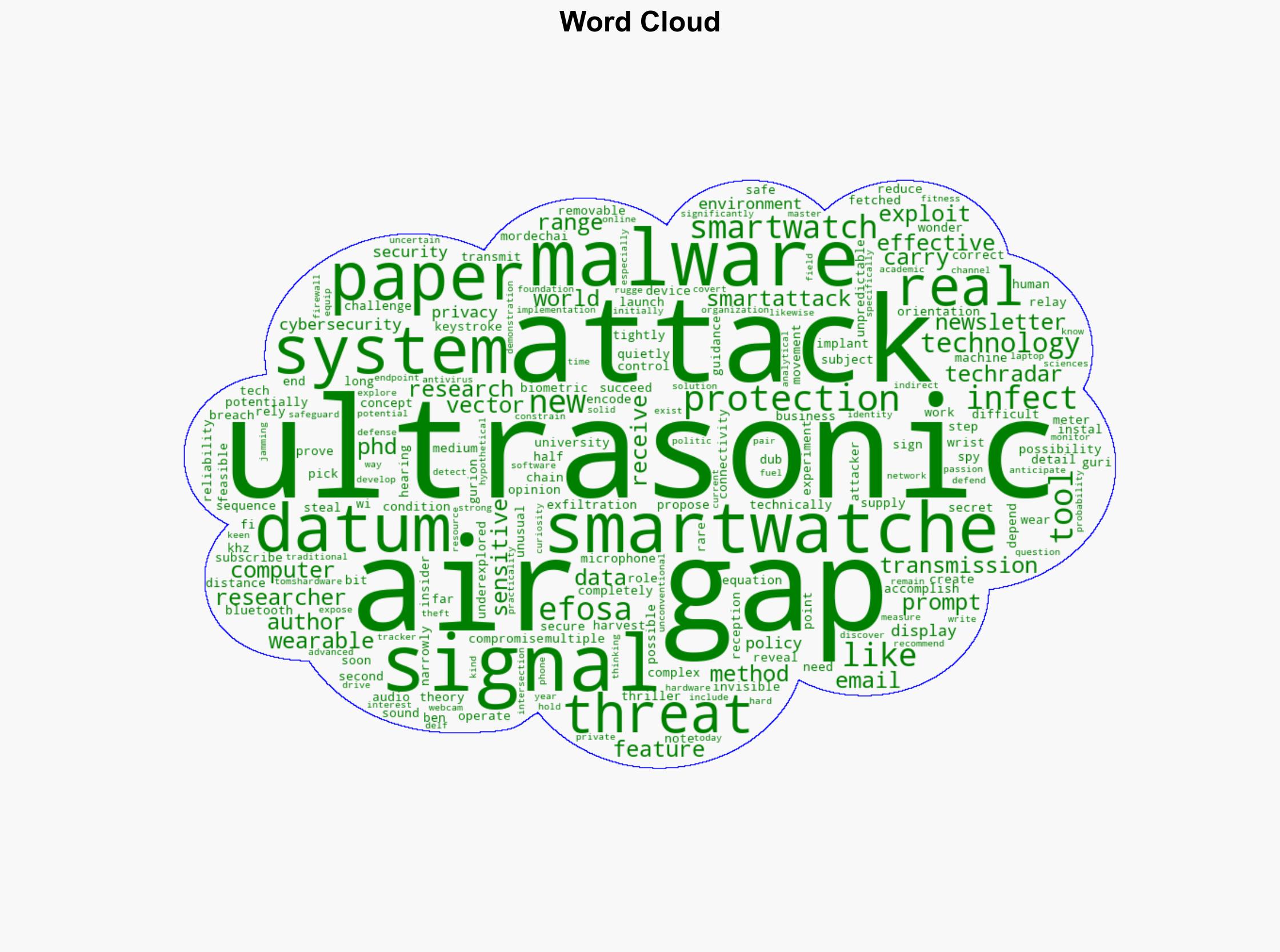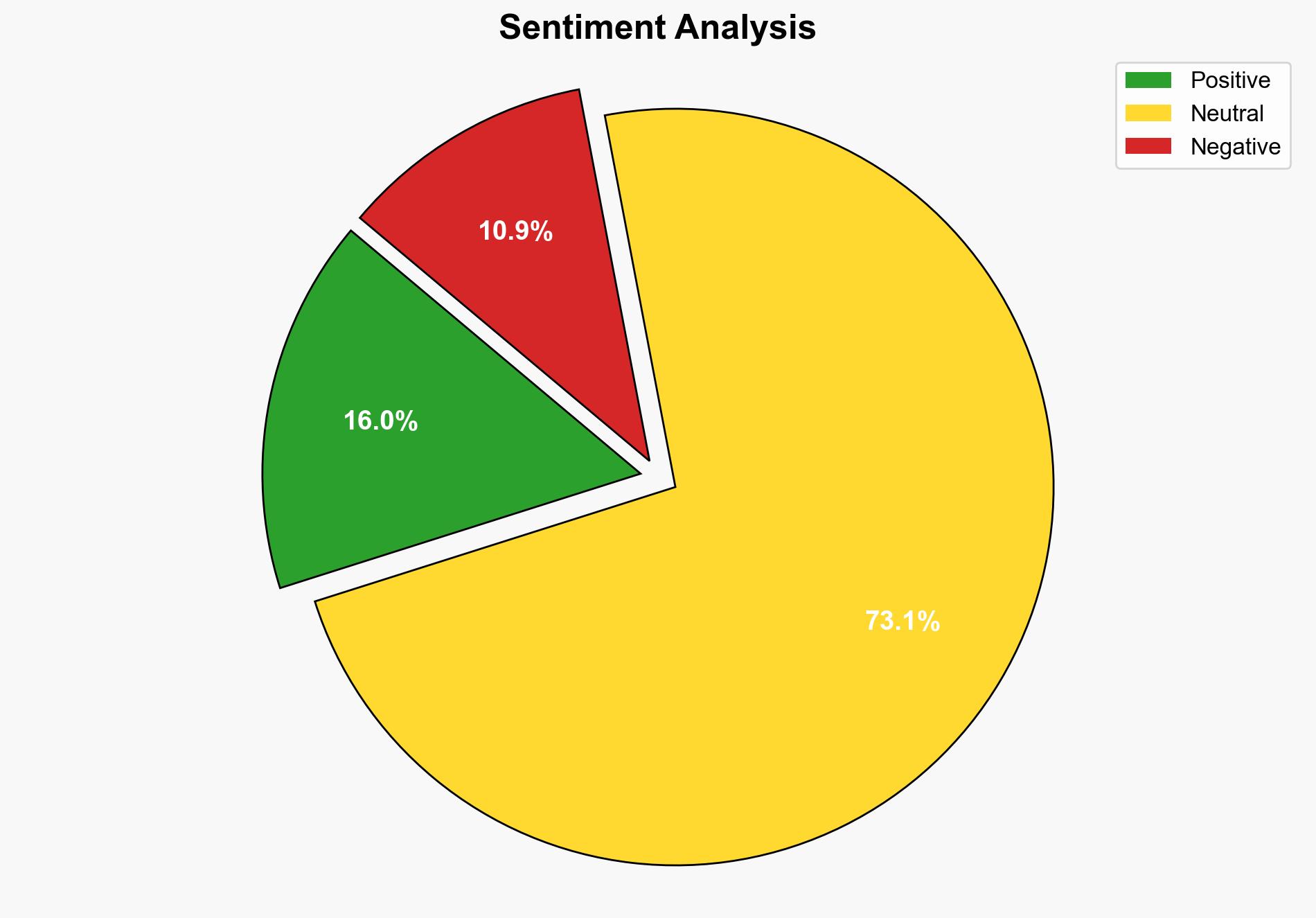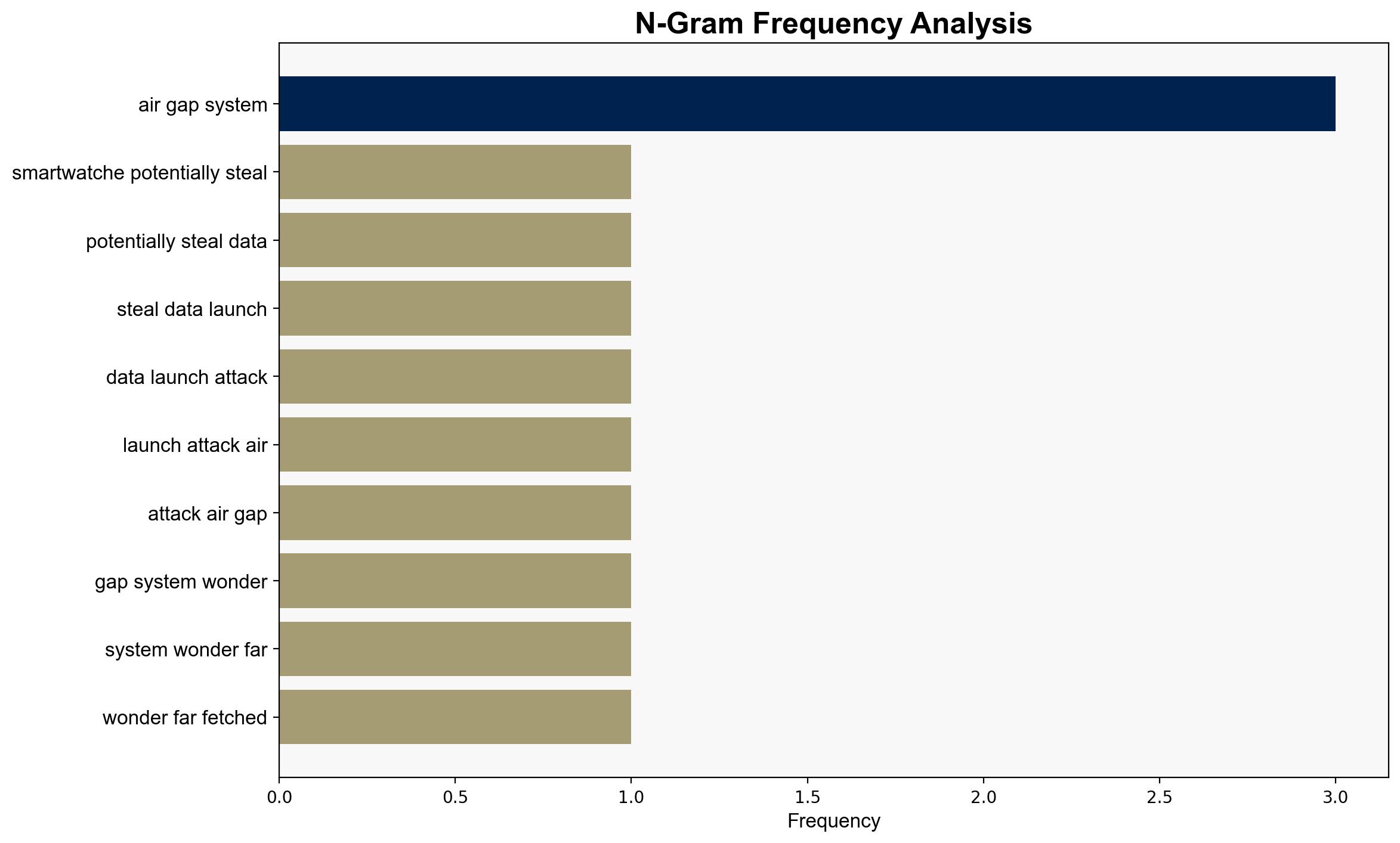Smartwatches could potentially be used to steal data from or launch attacks on air-gapped systems – I wonder how far-fetched that really is – TechRadar
Published on: 2025-06-16
Intelligence Report: Smartwatches as Potential Vectors for Data Theft and Attacks on Air-Gapped Systems
1. BLUF (Bottom Line Up Front)
Recent research suggests that smartwatches could be exploited to exfiltrate data from or launch attacks on air-gapped systems using ultrasonic signals. While technically complex and narrowly feasible, this method highlights potential vulnerabilities in current cybersecurity frameworks. Organizations should assess their readiness to counter such unconventional threats and consider enhancing their security measures accordingly.
2. Detailed Analysis
The following structured analytic techniques have been applied to ensure methodological consistency:
Adversarial Threat Simulation
Simulated scenarios indicate that exploiting smartwatches requires multiple coordinated steps, including malware implantation and ultrasonic signal transmission. This highlights the need for robust supply chain security and insider threat mitigation.
Indicators Development
Key indicators include unusual ultrasonic signal activity and unexpected smartwatch behavior. Monitoring these can aid in early detection of potential threats.
Bayesian Scenario Modeling
Probabilistic models suggest a low likelihood of widespread attacks due to technical challenges, but the potential impact on sensitive systems remains significant.
Network Influence Mapping
Mapping relationships between smart devices and critical infrastructure can help identify potential attack vectors and influence points.
Narrative Pattern Analysis
Analyzing narratives around cybersecurity can provide insights into emerging threats and inform strategic communication efforts.
3. Implications and Strategic Risks
The emergence of smartwatches as potential attack vectors introduces new risks in cybersecurity, particularly for air-gapped systems traditionally considered secure. This could lead to increased focus on unconventional attack methods, necessitating a reevaluation of existing security protocols. The cascading effects might include heightened regulatory scrutiny and the need for advanced detection technologies.
4. Recommendations and Outlook
- Enhance endpoint protection with capabilities to detect ultrasonic signals and unconventional data exfiltration methods.
- Conduct regular security audits and penetration testing to identify and mitigate vulnerabilities in air-gapped systems.
- Develop scenario-based training for cybersecurity teams to prepare for potential smartwatch-related threats.
- Best Case: Improved security measures prevent successful exploitation of smartwatches in cyberattacks.
- Worst Case: Successful exploitation leads to significant data breaches and operational disruptions.
- Most Likely: Increased awareness and incremental improvements in security protocols reduce risk over time.
5. Key Individuals and Entities
Mordechai Guri, PhD, is noted for proposing the concept of using smartwatches for data exfiltration in air-gapped systems.
6. Thematic Tags
national security threats, cybersecurity, unconventional attack vectors, air-gapped systems





